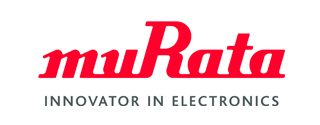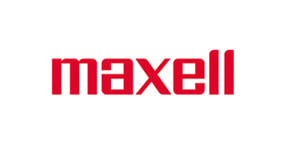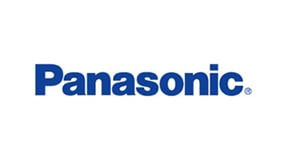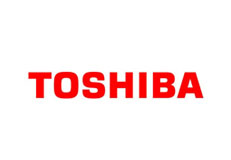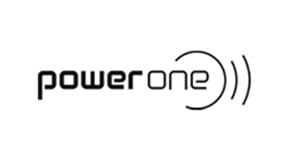Battery safety part 1: Preventing harm to yourself and others
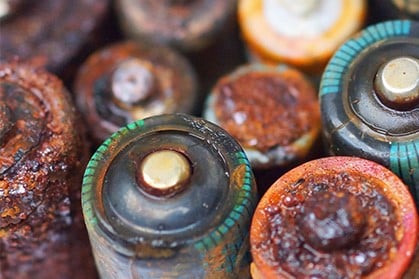
PREVENTING HARM
I can remember hammering on a C-cell after an unsuccessful attempt to pry it open with a screwdriver. It was the 1970’s, and like most kids in their single-digit years, I was curious. I had no clue that my forceful attempt to discover what lies inside could result in a painful experience. Spring forward to 2020, I wonder if the potential hazard would have been recognized even by the average adult; awareness of existing dangers lurking in everyday products does not seem to have been quite as widespread then as it is now.
With today’s variation in battery compositions, it is important that we understand some of the hazards posed by their modern chemistries and some precautionary measures against them. My brute force attempt to open what I am guessing was either a zinc-carbon or an alkaline battery, might have been met with dire consequences had it been one of today’s battery chemistries.
Let’s take a look at a few battery types with regard to safety.
Please Click Here To View Microbattery Products In Child Safe Packaging
Alkaline batteries
Despite providing 40 percent more energy than your everyday lithium-ion battery, alkalines maintain a high internal resistance, which make them suitable for low powered devices such as flashlights and portable electronics. It is because of this resistance that this battery family can freely travel with minimal regulation. Apart from the standard 1.5-volt AA and AAA alkalines with which we are all familiar, these batteries come in even smaller sizes such as the AAAA battery, the N cell, and the 12-volt A23 battery; yet smaller are the coin and button sizes, such as the LR1130 battery or the more common LR44 battery. Alkalines are relatively safe to pocket or throw in your purse for transport around town. Expect them to potentially heat up if they come in contact with other metallic objects like coins and keys. The heating is a result of an electrical short circuit, but they are unlikely to ignite. Alkaline batteries generally do not leak upon depletion as was commonplace with their zinc metal predecessors.
Although their risk is considerably lower than other battery chemistries, safe handling is important to protect yourself and others around you from harm. Safe handling includes common-sense practices, such as not storing batteries near combustible or flammable items, or not mixing them such that their negative and positive terminals come in contact with one another. And of course, it includes never applying blunt force to a battery of any kind.
Even though alkaline batteries are designed to be disposed upon depletion, many are aware that they can be successfully recharged to extend their service life. Charging is most effective when an alkaline battery still retains 50 percent or more of its charge and is limited to just a few charge cycles. Microbattery advises against this practice, and it is certainly neither recommended nor endorsed by manufacturers. The release of hydrogen gas generated while charging an alkaline battery is unpredictably susceptible to explosion.
Please Click Here To View Microbattery Products In Child Safe Packaging
Button and coin cell batteries
The danger of small, round, disc-shaped batteries, known as button or coin cells, primarily lies with their ingestion by children. The size, shape, and shininess appeal to their curiosity. Kids like to explore; infants and toddlers like to put things in their mouths. In 2015, the National Safety Council (NSC) reported a nine-fold increase in battery caused injuries or deaths in the past decade. Nearly 3,000 children are treated for battery ingestion each year. Like pharmaceutical products, batteries should be secured out of their reach.
Ingested batteries that get stuck in the esophagus can damage the esophageal wall and surrounding tissue. This occurs when saliva or water, functioning as a conduit for electrical current, creates a chemical reaction that results in the formation of tissue-burning caustic hydroxide. Batteries that pass innocuously through the esophagus can ulcerate the stomach lining. Because they are available in a variety of chemistry types—lithium coin batteries, zinc air batteries for hearing assisted devices, silver oxide watch batteries, alkalines, and others—the extent and type of harm is chemistry-specific.
If you suspect that someone has ingested a button cell, or any other type of battery please call your local poison control center immediately and follow their instructions while waiting for help to arrive. When calling, it is helpful to know the battery identification number found on its package. It can be used to cross-reference with their database for battery brand or chemistry-specific instructions.
In the United States you can dial the 24-hour National Battery Ingestion Hotline: (800) 498-8666.
We encourage you to read our article, Protecting our children from potentially lethal battery accidents.
Please Click Here To View Microbattery Products In Child Safe Packaging
Lead-based batteries
Lead is a tissue-corrosive element that can easily be ingested with contaminated hands touching the mouth or eyes, or through inhalation of contaminated dust. Starter battery terminals are made with lead. Electrical shorts caused by lead acid spillage create exhaustive hydrogen fumes that are harmful if inhaled, or in the presence of an ignition source, can create a small explosion
Children and fetuses are most vulnerable to harm from lead poisoning. It can negatively affect their growth, damage the brain, cause renal lesions on the kidney, impair hearing, and induce behavioral problems. With adults, it can inhibit memory and concentration, and harm the reproductive, circulatory, and nervous systems.
Of the electrolytes that exist in all batteries, lead-acid ranks among the most corrosive. Safe handling and secure storage to safeguard against inhalation, ingestion, and accessibility to children is imperative. When storing or working with your lead-acid battery, choose a well-ventilated area.
Lithium-ion and disposable lithium metal batteries
Energy-dense lithium-ion batteries are currently the cutting-edge battery chemistry. They offer many benefits to consumers. They pack power, they are efficient, and they do not suffer from memory issues. They are also among the batteries that pose the greatest danger from mishandling. In February 2018, the U.S. Consumer Product Safety Commission’s Status Report on High Energy Density Batteries Project reported over 25,000 overheating or fire incidents over a five-year period involving more than 400 types of battery-related consumer products.
Because of their potential danger, most airlines prohibit the transport of lithium batteries in checked luggage and strictly limit carry-on quantities. Readily accessible extinguishers can quickly put out a fire in the cabin, whereas a fire that is not promptly discovered in the aircraft’s checked luggage compartment can be far more devastating. Restrictions normally allow a maximum of two units, not exceeding a total of 320-watt hours, combined in carry-ons. In the 15-year period of 1991-2016, lithium batteries accounted for 138 aircraft incidents.
Short circuiting is often the culprit behind lithium-ion battery failures in transit according to some published reports. It is important to remember not to store or transport them in metal containers or mix them with other batteries, keys, or coins in your pocket. Contact with other metals can inflict serious burns from flaming that can be difficult to control once initiated. Spare Li-ion batteries should be kept in their original packaging or carefully wrapped in a plastic bag to prevent short circuits.
Resembling an oversized alkaline AA battery in appearance, a cylindrical Li-ion 18650 battery that is shorted supplies a persistent current which can lead to venting with a flame and explosive self-destruction. This battery is widely used with vaping devices, which have had their recent share of media attention. Because not all lithium-ion cells come with embedded preventative safeguards, it is a good idea to stick to reputable brands and distributors.
With the use of vaping products on the rise, incidents connected with e-cigarettes account for a significant percentage of lithium battery incidents. A study conducted by George Mason University estimated over two thousand emergency room visits over a two-year period ending in 2017 caused by explosion-related injuries from vaping products. Injuries ranged from severe burns to death. A large portion of these incidents occurred while the vaping device was in pocket, in use, or charging.
The increased volatility of disposable, primary lithium batteries equipped with a metallic cathode has subjected them to even tighter transport regulations than lithium-ion. Known as lithium metal batteries, they often pack greater capacities than their rechargeable counterparts. For example, the high energy, lithium thionyl chloride (LiSOCI2 or LTC) battery is restricted from use in any consumer product. Its ability to reach very high temperatures renders it as one of the most dangerous batteries. Specialized training for handling, transportation, and disposal is required.
Please Click Here To View Microbattery Products In Child Safe Packaging
Handling lithium-ion batteries
Despite their dangers, lithium-ion batteries are safe for use when handled responsibly. Abusing the battery with excessive loading, rapid charging, or charging below freezing temperatures stresses the battery and can lead to potentially harmful results. Avoid storing at below the recommended voltage per cell as this can foster dendrite growth that can lead to full short circuits. A subsequent temperature rise to 500°C (932°F) will cause it to ignite or explode.
A lithium battery that overheats, bulges, or emits hissing sounds should be immediately moved to a noncombustible surface, outdoors, and away from flammable materials and people. If safely possible, remove the battery from the device.
Small Li-ion fires can be controlled in the same way as other combustible fires. Foam extinguishers, and other materials such as ABC dry chemical, graphite or copper powder, or sodium carbonate will help put out fires. Since Li-ion batteries contains little metal content that can react with water, flight attendants are instructed by the FAA to use water or carbonated drinks, which cool surrounding areas to prevent spread. In a larger fire, however, such as one ignited in an electric vehicle, water will be ineffective and can worsen the fire. Combatting it with a class D extinguisher made for this type fire would be a better remedy.
Always review manufacturer-specific instructions for safe handling of your batteries and devices.
Power up safely.
Battery safety advice and takeaways
|
|
Please Click Here To View Microbattery Products In Child Safe Packaging
Next: Battery safety part 2: Protecting our children from potentially lethal accidents
About Us:
Microbattery.com is the leading provider when it comes to Hearing Aid Batteries, Watch Batteries, Lithium Coin Cells, Lithium Batteries, Alkaline Batteries, and Rechargeable Batteries across North & South America. We have the capability to meet the needs of all sizes of consumers, dealers, distributors and importers. For over 25 years, we have been striving to ensure high customer satisfaction and provide the best quality product possible. Ever since our online store was launched 15 years ago, we have been constantly improving & optimizing our site to provide the most enjoyable and convenient shopping experience for our valued customers.
Our online store has one of the largest selections of various batteries and battery products for all types of electronic applications on the web. Our website is very easy to navigate to help ensure customers can find exactly what they need. All of our products are conveniently organized by category. They can be easily filtered by the category drop down located at the top of every page on our website. Alternatively customers can use the Battery Finder™ located on our homepage, to quickly and simply identify the exact batteries they need. If you require any assistance in determining what products are right for you please do not hesitate to give us a call at (305)-371-9200.
At Microbattery.com, you will find one of the largest selections of batteries on the web. We have millions of cells of common batteries like CR2025, CR2032, LR44, LR41, AA, and AAA in stock at all times. We also carry a wide variety of less common batteries such as CR2477, CR2016, Rechargeable Batteries, Radio Batteries, Telephone Batteries, and Pet Batteries. Regardless of your battery needs, we have got you covered. If you require a battery that we currently do not carry, please feel free to give us a call at (305)-371-9200 to place a special order (some restrictions apply).
Our customer base currently includes tens of thousands of satisfied consumers, various private companies, (local, state, federal, international) government agencies, military, institutions, wholesalers, and chain stores. Without hassle, we will ship your products worldwide, already having done so for over eighty-five countries.
Thank you for taking the time to read this article: If you are interested in purchasing products from Microbattery.com use coupon code: Microfive : To save 5% on your entire online order!

